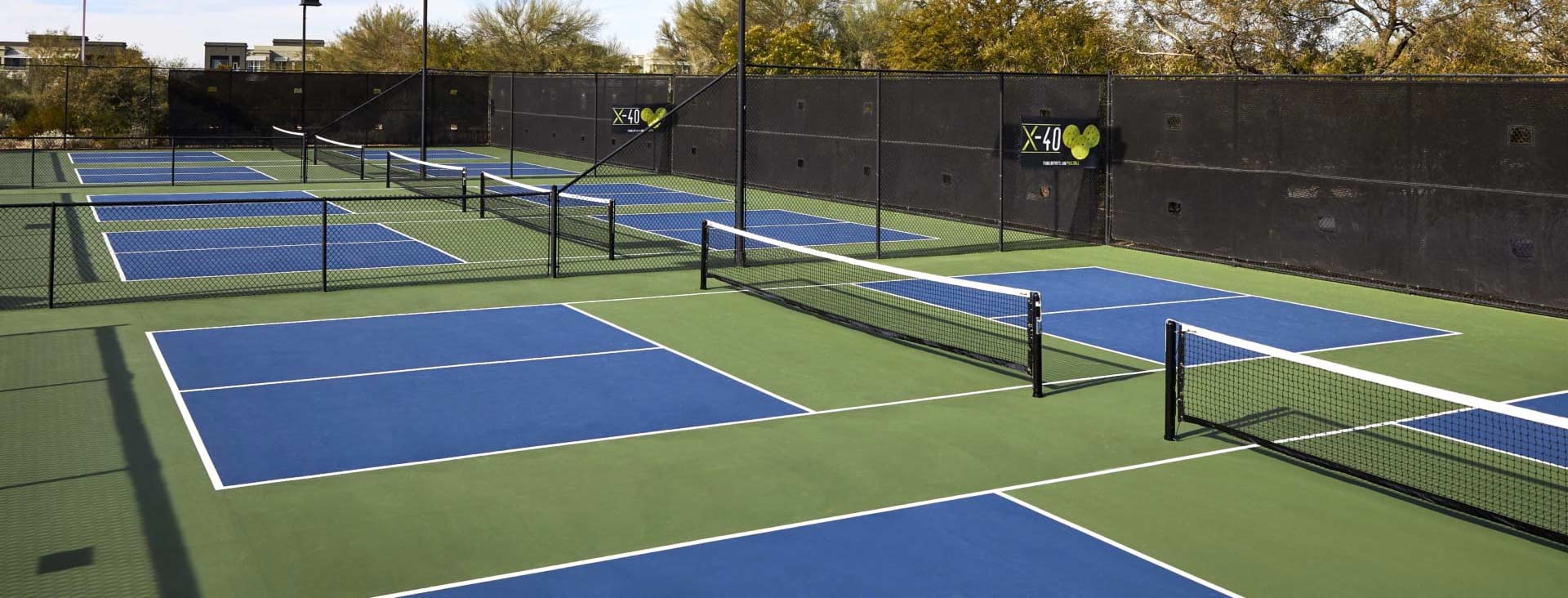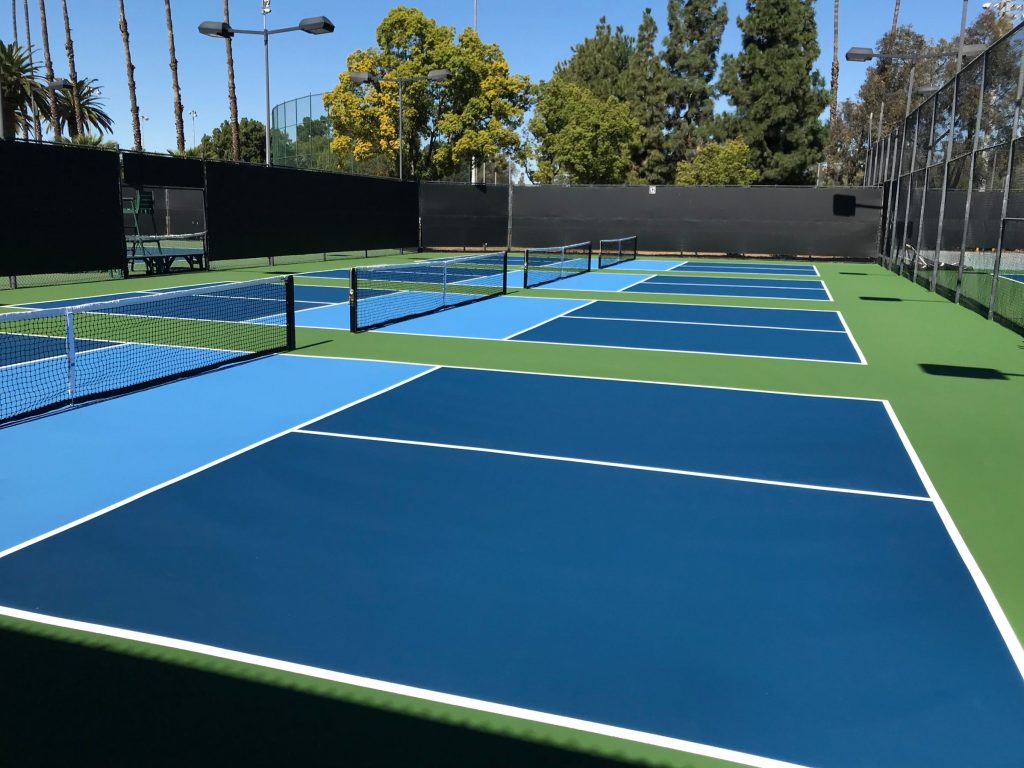Transform Your Space with Quality Pickleball Courts Design & Construction in Illinois and Midwest
Transform Your Space with Quality Pickleball Courts Design & Construction in Illinois and Midwest
Blog Article
Exploring the Different Sorts Of Pickleball Judiciaries: Indoor, Outdoor, and Specialized Surfaces
The landscape of pickleball courts varies, encompassing indoor, outside, and specialized surface areas, each offering special features that can significantly affect player experience and performance. Indoor courts provide climate-controlled atmospheres, while exterior choices welcome natural components that can enhance social communication. Additionally, customized surfaces provide to differing gamer needs, from cushioning for joint wellness to improved grip for competitive play. Comprehending these distinctions is important for players, coaches, and center supervisors alike, as it impacts not only efficiency yet additionally the general satisfaction of the game. What factors should one think about when selecting the optimal court for their needs?
Indoor Pickleball Judiciaries
Although outside pickleball courts are popular, indoor pickleball courts use a regulated atmosphere that boosts gameplay regardless of weather condition conditions. These courts are generally housed in centers such as fitness centers, community centers, and committed sporting activities complexes, offering gamers with a regular having fun surface area complimentary from the changability of rain, wind, or extreme temperature levels.

One more substantial benefit of interior pickleball courts is the ease of access they supply year-round. Players can engage in the sporting activity without issue for seasonal adjustments, making it an appealing choice for league play and events. Additionally, numerous interior facilities offer facilities such as storage locker areas, remainder locations, and social areas, promoting a sense of neighborhood amongst gamers. In general, interior pickleball courts play a crucial duty in advertising the sport and suiting its growing popularity.
Exterior Pickleball Judiciaries
Exterior pickleball courts provide an unique playing experience that attaches players with nature while providing a possibility for social communication and neighborhood engagement. These courts are generally built in parks, recreational areas, and community facilities, making them available to a broad target market.
The layout of outdoor courts mirrors that of indoor facilities, featuring a rectangle-shaped having fun surface determining 20 feet wide by 44 feet long for increases suits. The al fresco setting enhances the playing experience, enabling gamers to enjoy fresh air and all-natural light. Exterior courts also present obstacles such as differing climate problems, which can influence gameplay. Wind, sun glare, and temperature level fluctuations can affect shot precision and player endurance.
Moreover, outdoor courts commonly foster a sense of area, as they are frequently used for neighborhood tournaments, clinics, and laid-back play. This public aspect motivates gamers of all ability levels to engage with one another, advertising both affordable spirit and camaraderie.
Specialized Pickleball Court Surfaces

Common materials used for specialized pickleball courts include acrylic and cushioned surfaces, which provide a balance of firmness and comfort. Acrylic surfaces, frequently used in outside settings, offer exceptional weather condition resistance and can be painted with lively colors for exposure and looks. Cushioned surface areas, normally located inside your home, use extra shock absorption, decreasing the strain on players' joints throughout extreme play.
In addition, specific surfaces can be customized to fit various ability levels and gamer preferences. For example, entertainment players may take advantage of softer surfaces that permit longer rallies and less exhaustion, while competitive gamers may prefer stronger surfaces for faster sphere response and enhanced control.
Comparing Court Features
When examining pickleball courts, numerous qualities come right into play that can substantially impact the general experience for gamers. One of the main factors is the surface product, which can vary from concrete to specialized sporting activities floor covering. Concrete surfaces have a tendency to be sturdy but may cause a more difficult bounce, while softer surface areas can give better hold and shock absorption, boosting gamer comfort.
One more crucial characteristic is court dimensions. Common pickleball courts gauge 20 feet wide by 44 feet long for doubles play; nevertheless, specific centers might adjust these dimensions based on offered area or gamer choices. In addition, the elevation of surrounding walls or obstacles can influence gameplay, particularly in indoor settings where sphere rebound is an aspect.
Lighting is additionally important, particularly in interior courts where presence can reduce performance. Exterior courts need to consider ecological aspects such as wind and sunlight, requiring calculated positioning and possibly the use of windbreaks or color frameworks.
Picking the Right Court
Picking the ideal pickleball court involves careful consideration of numerous elements that straight influence gamer experience and efficiency. One of the key considerations is the court surface area. Indoor courts typically include hardwood or synthetic products that my response offer regular bounce and traction, while exterior courts may make use of asphalt or concrete, which can affect sphere speed and player activity.
Environmental problems also play an essential role. Exterior courts are subject to wind, sunlight, and differing temperatures, all of which can influence gameplay. Conversely, interior courts supply a controlled environment, permitting year-round play without the interference of climate conditions.
Place is an additional crucial element; accessibility can figure out just how frequently players can useful site participate in the sporting activity. Proximity to home or work, in addition to the schedule of amenities such as illumination and seats, can boost the overall experience.
Lastly, the level of competitors and area ambience should not be neglected. Selecting a court that straightens with one's ability degree and social choices can significantly enhance pleasure and motivation. By very carefully considering these elements, players can make an informed decision that optimizes their pickleball experience.
Conclusion
In summary, the choice of pickleball court considerably influences gameplay experience and performance. Indoor courts provide controlled conditions that enhance play, while outdoor courts offer a distinct environment that fosters community interaction regardless of possible climate obstacles. Specialized surface areas additionally improve player safety and efficiency, satisfying specific preferences. Eventually, selecting the appropriate court kind is crucial for maximizing satisfaction and skill development in pickleball, guaranteeing players can totally involve with the sport in their preferred setup.
Report this page